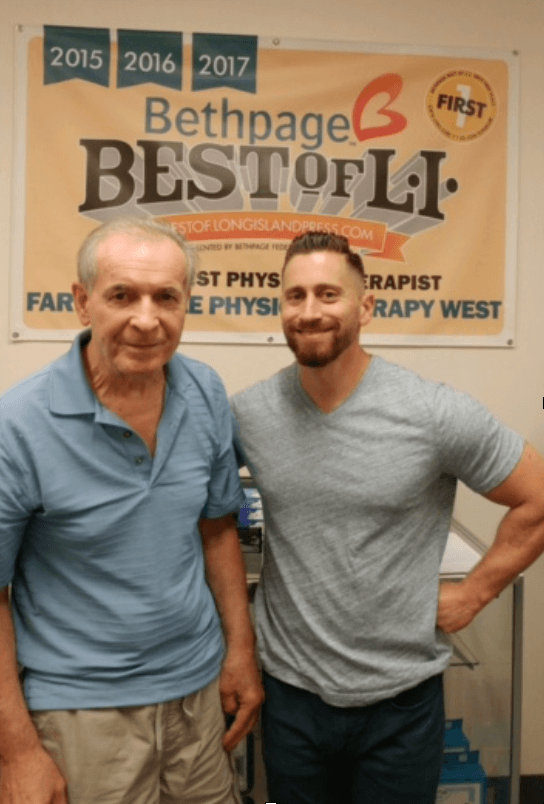“Due to a disability, I have been coming to Farmingdale Physical Therapy West for several years. An easy task like putting on my sneakers was difficult, due to having no strength in my leg to push my foot into it. Because of the wonderful therapists and my diligence, I gained more strength in my leg and was able to push my foot into my sneaker. There are many other things that I couldn’t do and now I can. I look forward to going to therapy; the staff is made of dedicated, wonderful, and friendly people. Thanks to the staff for helping me overcome my hurdles.”
There are a variety of causes for both hip pain and knee pain. While the hip joint can withstand a good amount of wear and tear, it’s not indestructible. With age and usage, the hip cartilage can wear down. Muscles and tendons in the hip can also get overused. The anatomy of the knee is complex; it has bones, pads of cartilage and a joint capsule. Injury or aging can cause joint pain in the knee.
Causes of Hip Pain
Osteoarthritis/Rheumatoid Arthritis
Rheumatoid arthritis and osteoarthritis are the main culprits of hip pain in older folks. Both can lead to a breakdown of the cartilage and to inflammation in the hip joint. Along with pain, there can be stiffness and reduced range of motion in the hip.
Trochanteric Bursitis / Tendonitis
Bursitis can also cause pain in the hip. The trochanteric bursa is a sac of fluid that reduces friction on the side of the hip. Repetitive activities may cause this bursa to get inflamed, leading to irritation of the hip joint and pain. Like bursitis, tendinitis can cause inflammation and is usually caused by repetitive stress from movement.
Strains/Sprains
Muscle and tendon strains are generally a result of overuse from repeated activities that can put strain on the ligaments, tendons and muscles that support the hips. Ligament sprains and strains can also occur from quick over-stretching of the tissues causing micro-tearing and injury. If any of these structures is inflamed or injured, the hip won’t work normally, and there will be pain.
Total Hip Replacements
When the hip has suffered a significant trauma such as a fracture or long-term arthritis that is affecting your ability to move and walk, a total hip replacement surgery may be needed. In a total hip replacement surgery, the socket of the hip joint and head of the femur are replaced.
Typically people have suffered for a while before having surgery, leading to changes in walking, muscle strength and function. Physical therapy before surgery, in general, has been shown to help the speed and quality of recovery after surgery.
Labral Tears
Hip labral tears may result from a combination of several different variables, including:
- Bony abnormalities in the hip joint (hip impingement)
- Hip muscle tightness
- Hip muscle weakness
- Improper technique with repetitive activities
- Participation in sports that require distance running, or repetitive twisting and cutting
Once torn, the labral tissue in the hip does not have the ability to heal on its own. There are surgical procedures to remove or repair torn labral tissue; however, treatment for a labral tear often begins with physical therapy.
Nonsurgical treatment efforts are focused on addressing symptoms by maximizing the strength and mobility of the hip while minimizing stress placed on the injured area. In certain cases, patients are able to achieve a satisfactory level of activity without surgery.
Surgical interventions are available to clean out the hip joint, and repair or reconstruct the torn labral tissue. Following surgery, patients will complete several months of physical therapy to regain function of the hip.


